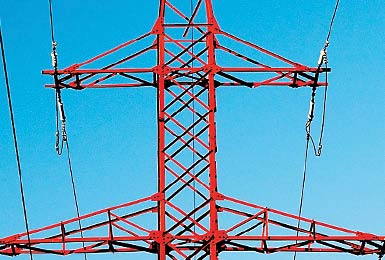Smart Grid: The Key to Our Energy Future
Smart grid technology is gradually transforming the way we produce and consume electrical power, but the pace of full-scale adoption is beginning to accelerate.
March 2011

We are on the cusp of another profound change, as electric power prepares for a top-to-bottom, digital technology redesign. Just as electricity touches all corners of the world, so, too, will the new energy age of digital modernization. Significant changes lay ahead in how we produce, distribute, and use electricity. Smart grid is the glue that holds this new world together.
The Not-So-Smart Grid
Today's power system revolves around a small number of large power plants that distribute power in one direction: out to the consumer. The system was designed when energy was cheap and considerations like consumer choice and the environment weren't a priority. As long as power remained cheap, plentiful, and benign, consumers tolerated an inefficient power system. Under the current system, millions of devices draw power when they aren't even being used. And lacking real-time demand information, electric utilities must maintain large "spinning reserves" on standby. We waste billions of dollars generating energy that never reaches a single light bulb, or arrives at a dormant device. Enough electricity is lost annually around the world to power India, Germany, and Canada for an entire year. Power system challenges continue to mount. The demand for more electricity grows with population and the increased use of electrically-powered devices. Simultaneously, producing clean power to support sensitive electronic equipment using semiconductors chips is becoming difficult as the grid's reliability weakens. In 1980, chip load on the U.S. grid was relatively small. But in the 1990s, chip load share increased sharply. Today, chip and automated manufacturing loads have risen to 40 percent, and the load is expected to increase to more than 60 percent by 2015.
There have been five major blackouts in the past 40 years, three of which occurred in the past nine years. System failures large and small are growing in terms of the number of events and the number of consumers affected. Power outages and interruptions cost Americans at least $150 billion each year, about $500 per person.
Power shortages and a weakened grid aren't the only concerns. The days of cheap power are over. Many power plants in the aging U.S. fleet are due for replacement or modernization. Clean air regulations for mercury, SOx (sulfur oxides), and NOx (nitrogen oxides) stemming from 1990s legislation are just now coming due. With compliance targeted for 2015, up to 30 percent of U.S. coal units could be decommissioned because the older technology makes plant upgrades expensive. Similarly, aging nuclear power plants will require costly upgrades or replacement in the coming years. Electric power from replacement plants will be significantly more expensive.
The Smart Grid Solution
Smart grid will be to the power system what iPhone was to cell phones: technology that gives consumers choices and spurs an avalanche of new products and services to meet consumer demands.
Unlike virtually every other commodity, consumers currently have little choice when it comes to electric power. Likewise, grid operators lack data intelligence to balance loads and monitor power flows. As a result, electricity generated by sources such as wind and solar is difficult to manage. Even if data were available, inefficiency and waste persist because of slow mechanical switch response times, a lack of automated analytics, and the inability to know what is happening in real time in the grid.
Project Announcements
SencorpWhite Plans Hamilton, Ohio, Headquarters-Manufacturing Operations
12/29/2025
Kraken Technologies Limited Plans New York City Headquarters Operations
12/29/2025
Lupin Expands Coral Springs, Florida, Operations
12/29/2025
KPPC Advanced Chemicals Expands Casa Grande, Arizona, Operations
12/29/2025
Volvo Group Plans Tacoma, Washington, Distribution Operations
12/29/2025
Alnylam Pharmaceuticals Expands Norton, Massachusetts, Operations
12/29/2025
Most Read
-
The Workforce Bottleneck in America’s Manufacturing Revival
Q4 2025
-
Rethinking Local Governments Through Consolidation and Choice
Q3 2025
-
Data Centers in 2025: When Power Became the Gatekeeper
Q4 2025
-
Lead with Facts, Land the Deal
Q3 2025
-
Tariff Shockwaves Hit the Industrial Sector
Q4 2025
-
Investors Seek Shelter in Food-Focused Real Estate
Q3 2025
-
America’s Aerospace Reboot
Q3 2025
